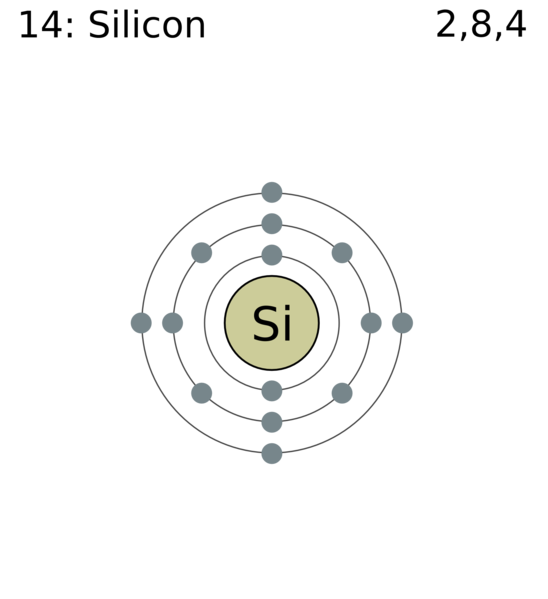
An atom of an element has
Answer
493.8k+ views
Hint: Atomic number is numerically equal to the number of electrons in a neutral atom. If we can find the atomic number, we can search this element in the periodic table and can find its name and simultaneously the valency can also be found out.
Complete step by step answer:
Let’s first find out the atomic number of this element;
In this element it is said that the outermost shell is the
Now, valency is equal to the number of electrons in the outermost shell and hence its valency is equal to

Additional information: The word silicon comes from the Latin silex or silicis, meaning "flint" or "hard stone." On a weight basis, only oxygen is surpassed by the concentration of silicon in the crust of Earth. Silicon is part of the carbon family and is also a non-metallic element.
Note:
Note that the maximum accommodation capacity for each shell is
Complete step by step answer:
Let’s first find out the atomic number of this element;
In this element it is said that the outermost shell is the
Now, valency is equal to the number of electrons in the outermost shell and hence its valency is equal to

Additional information: The word silicon comes from the Latin silex or silicis, meaning "flint" or "hard stone." On a weight basis, only oxygen is surpassed by the concentration of silicon in the crust of Earth. Silicon is part of the carbon family and is also a non-metallic element.
Note:
Note that the maximum accommodation capacity for each shell is
Recently Updated Pages
Master Class 11 Economics: Engaging Questions & Answers for Success

Master Class 11 Business Studies: Engaging Questions & Answers for Success

Master Class 11 Accountancy: Engaging Questions & Answers for Success

Master Class 11 English: Engaging Questions & Answers for Success

Master Class 11 Computer Science: Engaging Questions & Answers for Success

Master Class 11 Maths: Engaging Questions & Answers for Success

Trending doubts
Which one is a true fish A Jellyfish B Starfish C Dogfish class 11 biology CBSE

State and prove Bernoullis theorem class 11 physics CBSE

1 ton equals to A 100 kg B 1000 kg C 10 kg D 10000 class 11 physics CBSE

In which part of the body the blood is purified oxygenation class 11 biology CBSE

One Metric ton is equal to kg A 10000 B 1000 C 100 class 11 physics CBSE

Difference Between Prokaryotic Cells and Eukaryotic Cells




